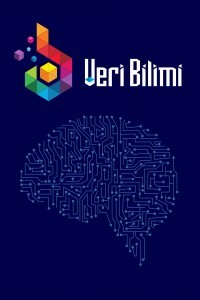Uydu görüntülerinden zincir kod ve en uzun ortak alt küme yöntemleri ile yarı otomatik yol bulma
Bu çalışmada uydu resimlerindeki yolların tespitinde yeni bir yarı otomatik önişlem yöntemi geliştirilmeye çalışılmıştır. Sistem dört ana aşamadan oluşmaktadır. İlk aşama, uydu görüntüsündeki kenarlıkların ortaya çıkarılma işlemidir. İkinci aşama, zincir kod yönteminin (chaincode) kenar nesnelerine uygulanarak her bir kenar nesnesine ait zincir kodun elde edilmesidir. Üçüncü aşama, en uzun ortak alt küme (longest common subsequence) yöntemi ile zincir kod benzerlikleri karşılaştırılarak birbirine benzer kenarların otomatik tespit edilmesidir. Son aşama ise, belirlenen yol kriterlerine ve istatiksel parametrelerden faydalanılarak hatalı piksellerin elimine edilmesidir. Önerilen yöntem kullanılarak üç adet örnek uydu görüntüsünde denemeler yapıldığında sırarsıyla duyarlılık (sensitivity) %60’lar civarında, belirginlik (specifity) değeri %90 üzeri, doğruluk (accuracy) ise %80 civarı olduğu görülmüştür. Bu sonuçlar önerilen sistemin düşük hata oranı ile kullanılabilir bir önişlem yöntemi olduğunu göstermiştir.
Anahtar Kelimeler:
Uydu görüntüleri, yol tespiti, zincir kod, en uzun ortak alt küme
___
- [1] Wolodtschenko A, Forner T Prehistoric and early historic maps in Europe: Conception of Cd-Atlas Spring 2007 e-Perimetron Vol.2 No.2 pp 114-6[2] Bajcsy R and Tavakoli M Computer recognition of roads from satellite pictures 1976 IEEE Transactions on Systems Man and Cybernetics vol. 6 pp 623–37[3] Lim J S Two Dimensional Signal and Image Processing 1990 (New Jersey: Prentice Hall)[4] Gaetano R, Zerubia J, Scarpa G and Poggi G Morphological road segmentation in urban areas from high resolution satellite images 2011 17th International Conference on Digital Signal Processing (DSP), Corfu, 2011, pp. 1-8[5] Ünsalan C, Boyer K L Introduction. In: Multispectral Satellite Image Understanding. Advances in Computer Vision and Pattern Recognition (London: Springe)[6] Ameri F, Mobaraki M, Valadan Z and Javad M Semi-automatic extraction of different-shaped road centerlines from MS and pan-sharpened IKONOS images 2008 Int. Archives of Photogrammetry, Remote Sensing and Spatial Info. Sciences p 37[7] Sirmacek B and Unsalan C Road Network Extraction Using Edge Detection and Spatial Voting 2010 20th Int. Conf. on Pattern Recognition Istanbul pp 3113-16[8] Ali H M, Boshir A and Ariful I M Automatic extractions of road intersections from satellite imagery in urban areas 2010 Int. Conf. on Elect. & Comp. Eng. Dhaka pp 686-689[9] Revathi M and Sharmila M Automatic road extraction using high resolution satellite images based on level set and mean shift methods 2013 4th Int. Conf. on Comp., Comm. and Networking Tech. Tiruchengode pp 1-7[10] Kirthika A and Mookambiga A Automated road network extraction using artificial neural network 2011 Int. Conf. on Recent Trends in Info. Tech. Chennai Tamil Nadu pp 1061-65[11] Arafat S Y, Butt A Y and Liaqat N Automatic road detection using MCSC 2011 IEEE 14th Int. Multitopic Conference, Karachi pp 126-131[12] Abraham L and Sasikumar M A fuzzy based road network extraction from degraded satellite images 2013 Int. Conf. on Advances in Computing, Comm. and Info. Mysore pp 2032-36.[13] Alshehhi R and Marpu P R Hierarchical graph-based segmentation for extracting road networks from high-resolution satellite images 2017 ISPRS Journal of Photogrammetry and Remote Sensing Vol.126 pp 245-60[14] Maboudi M, Amini J, Malihi S and Hahn M Integrating fuzzy object based image analysis and ant colony optimization for road extraction from remotely sensed images 2018 ISPRS Journal of Photogrammetry and Remote Sensing Vol.138 pp 151-63[15] Liu R, Song J, Miao Q, Xu P and Xue Q Road centerlines extraction from high resolution images based on an improved directional segmentation and road probability 2016 Neurocomputing Vol.212 pp 88-95[16] Das S, Mirnalinee T T and Varghese K Use of Salient Features for the Design of a Multistage Framework to Extract Roads From High-Resolution Multispectral Satellite Images 2011 IEEE Transactions on Geoscience and Remote Sensing vol.49 no.10 pp 3906-31[17] Canny J F A computational approach to edge detection 1986 IEEE Trans Pattern Analysis and Machine Intelligence pp 679-698[18] Shah M Fundamentals Of Computer Vision 1997 (Orlando, FL 32816: Comp. Science Dep. University Of Central Florida)[19] https://www.ics.uci.edu/~eppstein/161/960229.html (06.09.2018)[20] http://www.algorithmist.com/index.php/Longest_Common_Subsequence (06.09.2018)[21] Gonzalez R C, Woods R E Digital Image Processing 2007 (Pearson)[22] Serra J Image Analysis and Mathematical Morphology 1982 (Academic Press Inc.)[23] Grailu H, Lotfizad M and Sadoghi-Yazdi H 1-D chaincode pattern matching for compression of Bi-level printed farsi and arabic textual images 2009 Image and Vision Computing Vol.27, pp 1615-25[24] Sánchez-Cruz H, Bribiesca E and Rodríguez-Dagnino R M Efficiency of chain codes to represent binary objects 2007 Pattern Recognition Vol.40 pp 1660-74[25] Guang-quan L, Hong-guo X and Yi-bing L Line detection based on chain code detection 2005 IEEE Int. Conf. on Vehicular Elec. and Safety pp 98-103[26] Bribiesca E A new chain code 1999 Pattern Recognition Vol.32 pp 235-251[27] Anami B S and Pagi V B Acoustic signal based detection and localisation of faults in motorcycles 2014 IET Intelligent Transport Systems Vol.8 no.4 pp 345-351[28] Kawade G, Sahu S, Upadhye S, Korde N and Motghare M An analysis on computation of longest common subsequence algorithm 2017 Int. Conf. on Int. Sustainable Sys. pp 982-87.
- Başlangıç: 2018
- Yayıncı: Murat GÖK
Sayıdaki Diğer Makaleler
Ensar Arif SAĞBAŞ, Osman GÖKALP, Aybars UĞUR
Seyfettin VADİ, Ramazan BAYINDIR
Uydu görüntülerinden zincir kod ve en uzun ortak alt küme yöntemleri ile yarı otomatik yol bulma
Bir Öğrenci Bilgi Sisteminin Kullanılabilirliğinin Makine Öğrenmesi Teknikleriyle Tahmin Edilmesi
Denizhan DEMİRKOL, Elif KARTAL, Çağla ŞENELER, Sevinç GÜLSEÇEN
Nesnelerin İnterneti Güvenliğinde Blok Zinciri Uygulamaları
Serhat Ömer RENÇBER, Abdulkadir ÖZDEMİR
Atilla HEPKORUCU, Sevdanur GENÇ
Genetik Algoritma Ve Sınıflandırıcı Yöntemler İle Kanser Tahmini
